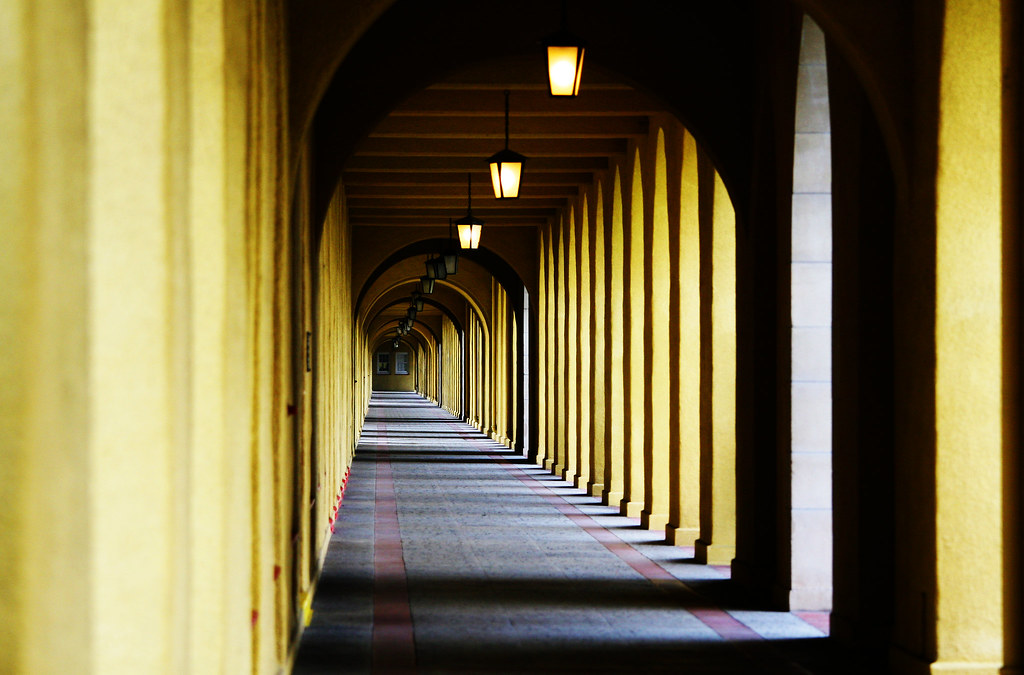
Photo source: Flickr http://bit.ly/2BGcvcF
We’re all familiar with the saying ‘first impressions count’, but why is it that when it comes to our homes, the hallway is usually the most neglected area of the house?
‘Hallways are the most important transitional spaces within our homes so whatever we choose to do decoration-wise has to work perfectly with the other rooms that lead off it,’ says Marianne Shillingford, creative director at Dulux. ‘This decorating dilemma often results in us being super cautious with colour and using neutral pale shades which can flatten the atmosphere creating a space that is simply a functional corridor that no-one really lingers in or remembers.
You don’t know what colour scheme to choose.
‘Focus on the fun in the function of a hallway and use colour and painted details to draw the eye through the space and towards the places you want people to go. Paint a subtle harlequin design on a wooden floor and let the diamonds guide you towards the most interesting bits of your home. Strong blocks of colour used on doors will add personality without overwhelming a space plus you can make the choice of colours personal to the people who live behind them.’ – Marianne Shillingford, creative director at Dulux
‘Hallways, by nature, are typically dark. Brown, green, grey, telephone box red, and any of the primary colours in full hue, are all ones I would avoid. These are dark and very strong colours. Primary colours in small spaces give off to much vibration and stimulation for us to absorb, causing unwanted headaches, loss of attention span and in some cases, even feelings of nausea. When deciding on a palette, if you are seeking drama, consider the level of sheen as well as the colour. You may also want to consider what colours the other adjacent rooms your hallways are coming of off as well as leading towards.’ – Gillian C. Rose
You are unsure what wallpaper will work in your hallway.
‘Often hallway space is limited, leaving little room for lots of accessories or other decorative items. Adding wallpaper is an ideal way to add a design feature and personality to the area without taking up valuable space or over cluttering. Stripes are a classic choice for homes and can be used to create the illusion of space in a hallway. Horizontal stripes will lead the eye upwards and vertical stripes will elongate the area. Choosing light and neutral colours or the ever-popular shades of grey will also add to the feeling of air and space.’ – Alex Whitecroft, head of design at I Want Wallpaper
Your hallway doesn’t feel warm or welcoming.
‘Think about how you wish to feel in your home. This will inform you of the colour and the direction you will go towards. For example, for a warm glow, the skirting could be a clotted cream colour high (gloss finish); the walls could be in a soft butter yellow (flat finish), and the ceiling could be in a hint of peaches and cream (flat finish). For a fresh, cool bask, the skirting could be a crisp light grey (high gloss finish); the walls in a pale minty colour (flat finish), and the ceiling the palest of azure (flat finish).’ – Gillian C. Rose
You’re not sure what the best flooring for your hallway is.
Normally a hallway tile is an extension of any tiling on the ground floor. For instance, a tile used in a kitchen/dining area is followed through into the hallway to give a consistent feel to the flooring and will make the area feel larger. This can be a variety of aesthetics to suit the property. Alternatively, the hallway can be made a feature, such as encaustic or a traditional Victorian chequerboard. Wood is often used in living areas and by using wood effect porcelain tiles throughout areas including hallways, you can achieve the warmth and depth of wood with the practicality of porcelain.
– James Arkell, founder of tile specialists